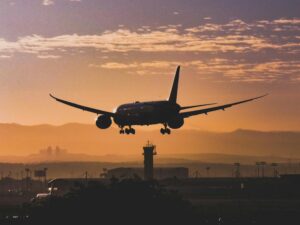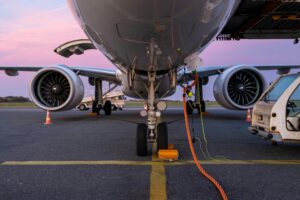The world’s most successful airlines often began with just one or two aircraft. This simple fact contradicts the increasingly common regulatory assumption that airlines need substantial fleets to operate successfully – a misconception now threatening Nigeria’s aviation sector.
While regulators push for minimum fleet requirements, history tells a different story about what makes airlines succeed. The evidence from global aviation leaders suggests that initial fleet size has little correlation with long-term success.
Giants From Humble Beginnings
EasyJet, now one of Europe’s largest carriers, began operations with just two wet-leased Boeing 737-200 aircraft. These 130-seat planes served only two routes: Luton to Glasgow and Edinburgh. From this modest start, the airline built an empire that now carries millions of passengers annually.
Ryanair’s story is even more striking. The Irish low-cost carrier launched in 1985 with a 15-seater Bandeirante aircraft and just 25 employees. The following year, they added two BAE748 aircraft and transported 82,000 passengers. Today, Ryanair operates hundreds of aircraft and serves as Europe’s largest airline by passenger numbers.
Perhaps most telling is Emirates, now synonymous with aviation luxury and scale. In 1985, the Dubai-based carrier began with exactly two aircraft: a Boeing 737-300 and an Airbus A300B4-200. From this foundation, Emirates built one of the world’s most recognizable and successful airlines.
These success stories share a common thread – they all started small, focused on operational excellence, and expanded strategically when market conditions and infrastructure permitted.
Nigeria’s Counterproductive Approach
The Nigerian Civil Aviation Authority (NCAA) has moved toward requiring airlines to operate a minimum of six aircraft. This approach ignores both historical precedent and current realities facing the country’s aviation sector.
Nigerian aviation history offers its own warnings. Both Okada Air and Nigerian Airways failed despite operating fleets of 26 aircraft each. Currently, airlines with double-digit fleet sizes struggle with high cancellation rates and poor on-time performance. These operational problems will only compound with mandatory fleet expansions.
The regulatory environment itself creates barriers to effective fleet management. NCAA registration timeframes are already lengthy with just three aircraft per operator. Even single aircraft additions take significantly longer in Nigeria than in countries with more efficient civil aviation authorities.
Economic oversight has proven challenging with current fleet sizes. How would regulators effectively monitor safety and compliance with twice as many aircraft in operation?
Infrastructure Can’t Support Expansion
Nigerian airports are already operating beyond capacity. Apron space and parking facilities are insufficient for current operations. Where would additional aircraft be accommodated?
The logistical challenges extend beyond physical space. Fuel availability remains a persistent problem for existing fleets. Airlines struggle daily to secure adequate fuel for scheduled flights. Adding more aircraft without addressing fuel supply chains would worsen delays and cancellations.
Foreign exchange access presents another major obstacle. Airlines already face immense difficulties obtaining forex for parts, maintenance, and leasing payments. Doubling fleet sizes would double these forex requirements without any clear solution to the underlying currency issues.
Economic Realities
Nigeria’s aviation environment makes aircraft acquisition exceptionally difficult. The “Nigeria factor” significantly impacts leasing terms and debt financing rates. Without solving these fundamental problems, operators could end up with more aircraft that remain unavailable for service.
Local infrastructure development should take priority over arbitrary fleet size requirements. Establishing Nigerian-based leasing companies and expanding maintenance, repair and overhaul (MRO) capacity would better serve the industry’s growth than forcing airlines to acquire aircraft they cannot effectively deploy or maintain.
The NCAA’s prohibition on aircraft older than 22 years further compounds the problem by enforcing higher capital costs. This policy forces airlines to “run before they have learned to walk,” committing to expensive assets before proving their business model.
Capital access remains severely limited in Nigeria’s aviation sector. This stems partly from airline structural issues but primarily from unpredictable regulatory interventions that increase investor risk perception.
Operational Challenges Beyond Fleet Size
Safety shows no correlation with fleet numbers. A single well-maintained aircraft can operate more safely than a dozen neglected ones.
The global pilot shortage affects Nigeria particularly severely. Where would airlines find qualified crews for expanded fleets? At what cost to their forex reserves?
Worldwide engine and parts shortages continue to plague aviation. These supply chain issues have become so severe that counterfeit parts have entered the market. Expanding fleets without addressing parts availability would leave more aircraft grounded.
Insurance represents another complexity. Nigerian carriers must maintain both local and foreign coverage at substantial expense. These costs scale with fleet size, creating another drain on limited resources.
A Better Path Forward
Rather than imposing blunt fleet requirements, the NCAA should focus on unbundling its registration process to enable different aviation business models. Carriers should be permitted to operate based on market demand and their operational capabilities.
The NCAA has already approved routes and schedules that they now claim exceed airlines’ capabilities. This contradiction raises questions: Why approve these routes initially? Are all carriers equally affected, or should regulators focus on specific airlines that consistently overpromise and underdeliver?
Nigeria lacks sufficient passenger traffic on its few commercial routes to support significant fleet expansion. The market simply cannot absorb the capacity that mandatory fleet increases would create.
A more nuanced approach would allow diverse business models to emerge. A carrier operating smaller 30-seat aircraft providing high-frequency shuttle services between business centers could thrive without maintaining six aircraft. Regulatory policy should enable such innovation rather than prevent it.
The immediate priority should be solving problems that reduce aircraft availability and prevent better utilization of existing fleets. Improving schedule reliability through better infrastructure and more predictable regulatory environment would deliver more immediate benefits than arbitrary fleet expansion.
Nigeria’s aviation sector needs evolutionary growth based on market realities, not revolutionary expansion driven by regulatory decree. The world’s most successful airlines prove that starting small and growing strategically represents the most sustainable path to aviation success.
When it comes to building successful airlines, history has already delivered its verdict: quality trumps quantity, especially at the beginning.
Disclaimer: The insights shared in this article are for information purposes only and do not constitute strategic advice. Aviation markets and circumstances vary, and decisions should be based on your organisation’s specific context. For tailored consultancy and guidance, please contact info@avaerocapital.com.




